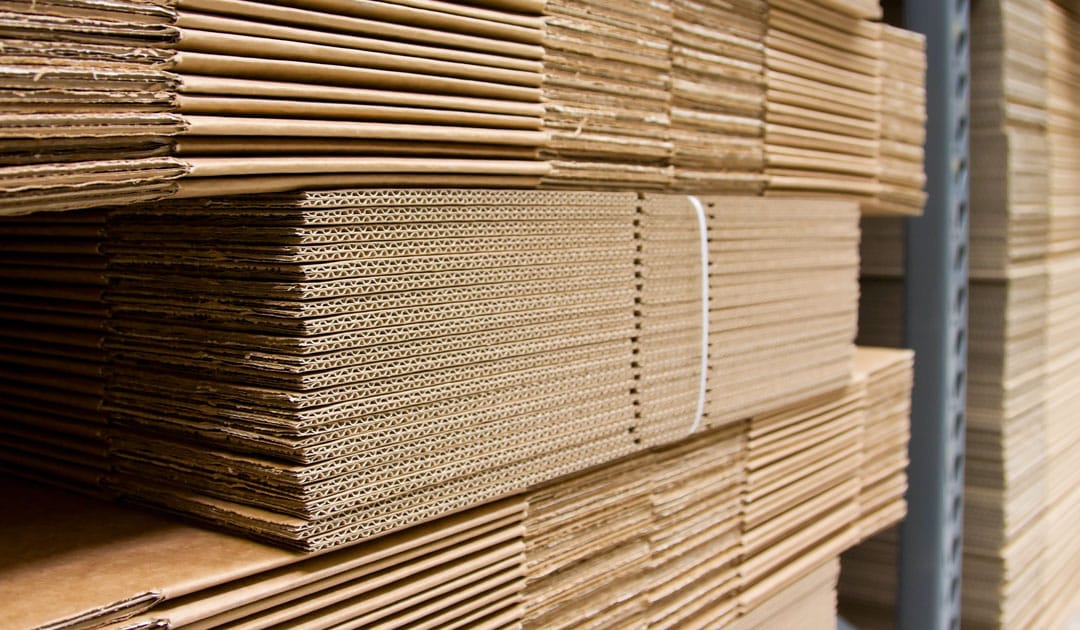Interested in a custom packaging solution? Looking for more information on our packaging products? Contact us by email, phone, or request a free quote below. We can’t wait to work with you.
Everything You Need to Know About PCR & PIR Packaging Materials

In today’s environmentally conscious world, it is becoming increasingly important for business owners to put sustainability first. With environmental issues like global warming and deforestation, we are seeing consumers becoming increasingly conscious and selective in their purchasing choices and habits.
As a business owner, one way you can demonstrate this commitment to the environment is through the use of environmentally friendly packaging materials such as PCR (Post-Consumer Recycled) and PIR (Post-Industrial Recycled) packaging.
This article will guide you through PCR and PIR packaging materials, covering their differences, examples, and benefits of each type. Read on to learn more!
What is PCR and PIR Packaging?
PCR packaging, or Post-Consumer Recycled packaging, is created from materials that have been used by consumers and then discarded, collected, and recycled. These materials are processed to create new packaging materials for reuse.
PIR packaging, or Post-Industrial Recycled packaging, is made from waste materials generated during the manufacturing process rather than from the consumed product. These materials are collected and recycled to create new packaging materials, reducing waste and promoting a more sustainable production cycle.
Both PCR and PIR packaging materials support a greener supply chain by reducing waste and conserving natural resources.
3 Key Differences between PCR and PIR Packaging?
Although both PCR and PIR packaging materials are eco-friendly, they have some key differences:
- Availability: PIR materials are more readily available, as they are generated during the manufacturing process, while PCR materials rely on consumer recycling efforts.
- Material purity: PIR packaging tends to have higher purity levels since it’s sourced from a controlled manufacturing environment. PCR packaging may require additional sorting and processing to remove contaminants.
- Source of materials: PCR packaging is made from post-consumer waste, while PIR packaging is made from post-industrial waste.
Examples of PCR packaging materials
PCR packaging materials are versatile and can be used in many different ways.
Examples of PCR packaging materials include:
- Recycled paper and cardboard – Used for boxes, mailers, and other paper-based packaging.
- Recycled plastic – Used for bottles, containers, and flexible films.
- Recycled aluminum – Used for cans, trays, and foil packaging.
Examples of PIR packaging materials
While PIR packaging materials are not always as versatile as PCR packaging for consumer-level use, they can be very effective for commercial and industrial applications.
Examples of PIR packaging materials include:
- Industrial scrap paper – Used for paperboard, corrugated cardboard, and molded pulp packaging.
- Industrial scrap plastic – Used for injection-molded containers, thermoformed trays, and films.
- Industrial scrap metal – Used for metal cans, caps, and closures.
Benefits of PCR and PIR packaging
Both PCR and PIR packaging materials offer significant benefits for business owners and consumers. Some of the shared benefits include:
- Reduced environmental impact – By using recycled materials, PCR and PIR packaging help conserve natural resources and reduce waste.
- Lower energy consumption – The production of recycled packaging materials requires less energy than virgin materials.
- Enhanced brand image – Showcasing your commitment to sustainability can help differentiate your brand and attract eco-conscious customers.
While these benefits overlap, PCR and PIV packaging also each have some unique advantages over the other type. Unique benefits of PCR packaging include a greater positive impact on waste reduction and the promotion of consumer recycling efforts. PIR packaging, on the other hand, has the advantage of material purity and consistent availability.
How to Purchase PCR and PIR Packaging Materials
Now that you are well-versed in the differences and advantages of PCR and PIR packaging, let’s explore how you can acquire them. Finding the right PCR and PIR packaging materials is crucial for both you as a business owner and your customers, especially when it comes to quality control and buyer satisfaction.
Here are 6 key steps to help you find the best recycled packaging materials for your needs:
Assess your packaging requirements – Determine the size, shape, strength and functionality needed for your products.
- Research suppliers – Look for reputable suppliers that offer PCR and PIR packaging materials and prioritize sustainability.
- Request samples – Obtain samples of packaging materials to get a feel for their quality and suitability for your products.
- Compare costs – Consider the price differences between PCR and PIR packaging materials and how they fit into your budget. Keep in mind that investing in environmentally responsible packaging can lead to long-term cost savings and boost your brand image.
- Verify certifications – Ensure that the supplier’s materials meet relevant environmental certifications and standards, such as the Forest Stewardship Council (FSC) for paper products and the Global Recycling Standard (GRS) for plastics.
- Customize the packaging – Work with your supplier to customize your packaging materials with your brand logo, colors, and messaging to highlight your commitment to sustainability. Customized packaging unlocks other benefits to your business as well!
Purchase Quality Sustainable Packaging with Crownhill Packaging
By understanding the differences between PCR and PIR packaging, exploring examples of each, and identifying the unique benefits they offer, business owners can make informed decisions about the right eco-friendly packaging materials for their needs.
Following the steps outlined in this article will ensure that you purchase the best PCR and PIR packaging materials to support your brand and satisfy your customers’ growing demand for sustainable products.
If you are looking to purchase sustainable packaging materials you can rely on for your business needs, consider Crownhill Packaging. Proudly serving businesses across North America, Crownhill Packaging is dedicated to delivering innovative, sustainable packaging products at affordable prices. Learn more about our range by getting in touch with us today!









